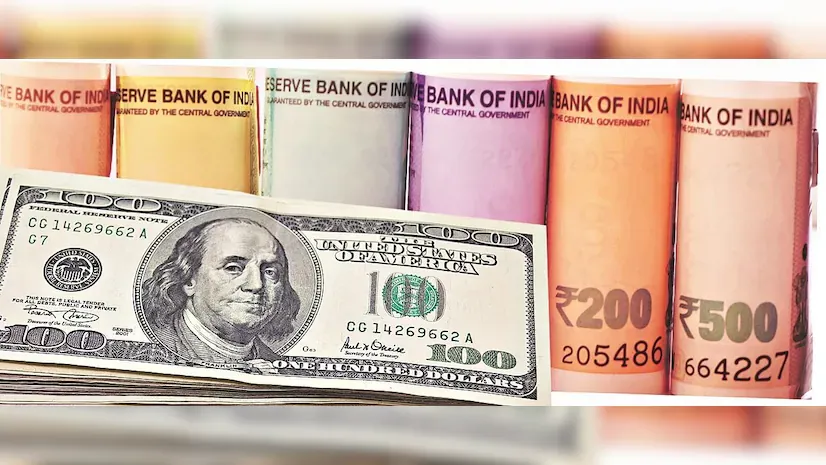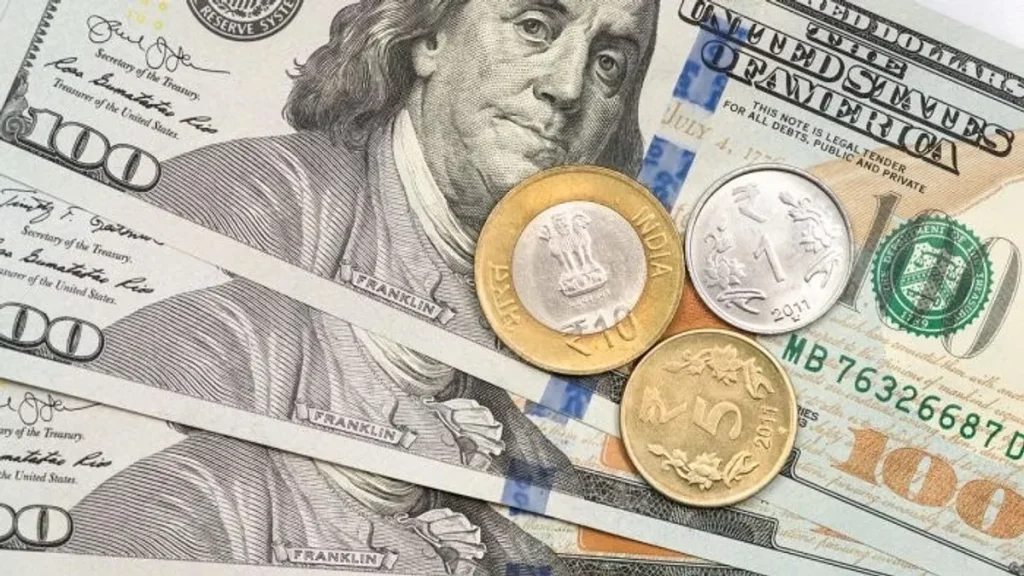The Indian rupee fell to an all-time low of 84.50 against the US dollar on Thursday, marking a 0.1% decline during the session and a 1.5% drop this year. This depreciation is largely attributed to significant foreign fund outflows from Indian markets and growing global risk aversion, exacerbated by the ongoing Russia-Ukraine conflict.

RBI’s Response to IMF Criticism
Despite the rupee’s slide, a co-authored article by RBI Deputy Governor Michael Patra contested the IMF’s decision to classify India’s exchange rate policy as a “stabilised arrangement” for the period of December 2022 to October 2023. The Reserve Bank of India (RBI) criticised the IMF’s approach, calling it “ad hoc” and an overreach of its role in monitoring member countries. The article emphasised that RBI’s intervention in the foreign exchange market should be considered in relation to India’s GDP size, noting that RBI’s net interventions during the period averaged 1.6% of GDP, similar to earlier crises.
Equity and Bond Markets Suffer
The weakness of the rupee also contributed to volatility in India’s equity markets. The BSE Sensex dropped by 0.5%, while the Nifty 50 index slid by 0.7%. A sharp decline in Adani Group stocks, with Adani Enterprises plummeting over 20%, added further pressure. Foreign institutional investors (FIIs) sold equities worth Rs 3,412 crore on Tuesday, deepening market concerns. Bond markets were similarly affected, with foreign investors offloading Rs 10,400 crore worth of bonds, particularly those included in JPMorgan’s emerging market debt index.

Foreign Outflows and Geopolitical Uncertainty
KN Dey, a forex consultant, highlighted that the rupee’s weakness is not just due to a stronger dollar but also the impact of outflows from Indian markets. He pointed out that the escalation of the Russia-Ukraine conflict is making the global risk environment even more unpredictable. The Reserve Bank of India has spent over $30 billion in efforts to defend the rupee, but it remains unclear how long it can hold the currency’s decline in check.

The situation underscores the vulnerability of the rupee, which faces pressure from both domestic market dynamics and global geopolitical uncertainties.
